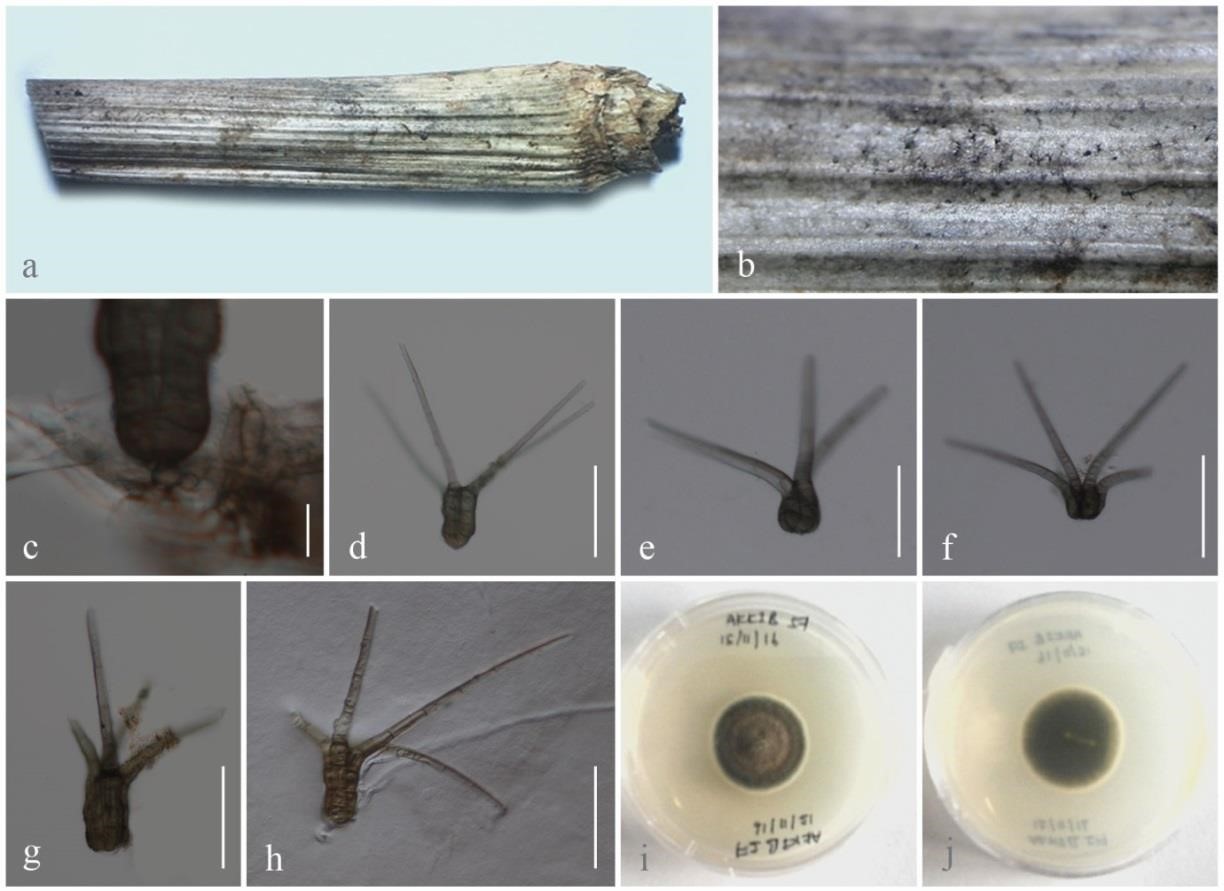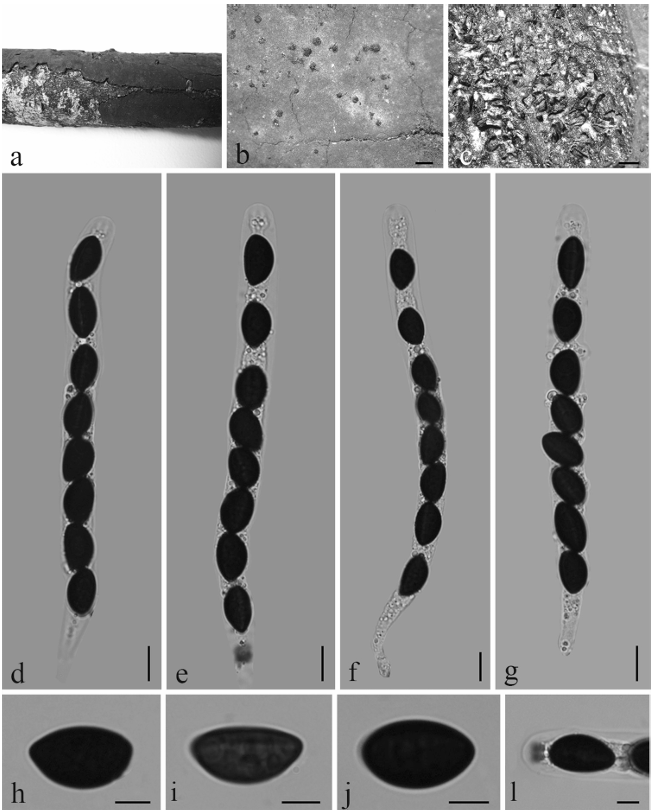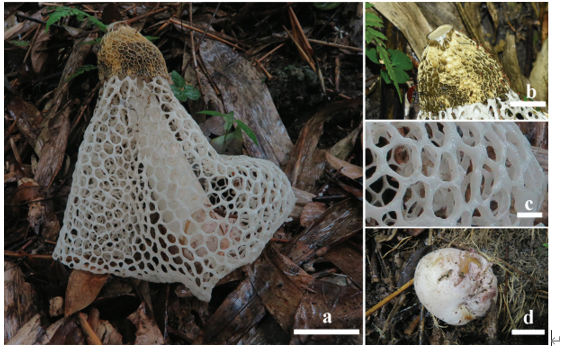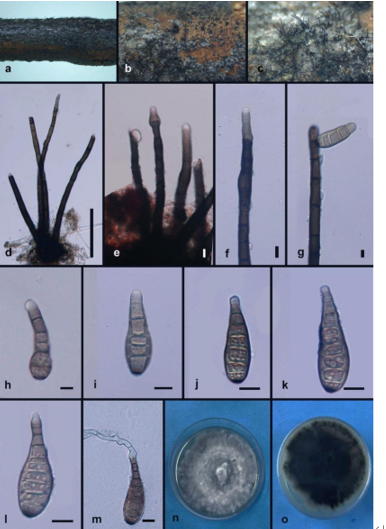Tetraploa sasicola (Kaz. Tanaka & K. Hiray.) Kaz. Tanaka & K. Hiray. 2020
Facesoffungi number: FoF 01984
Holotype: China, Kunming, Lake Dianchi, on decaying stems of Phragmites australis (Poaceae), 28 Nov 2016, A. Karunarathna, AKKIB 57 (MFLU 17–0377, new host and geographical record); living culture, MFLUCC 17–1387; KUMCC 16–0240.
Morphological description
Saprobic on decaying culms of Phragmites australis. Mycelia dark brown to black, effuse, branched, septate, partly superficial. Asexual morph: Conidiogenous cells micronematous, dark brown, monoblastic, integrated, short, usually undistinguishable from superficial hyphae. Conidia short cylindrical, conidial body four columnar, coarsely verruculose, 35–45 × 25–30 µm, with four apical setose appendages, 90–120 µm, partly split conidia, where the two columns of the upper part of the main conidial body is totally split along with the two apical appendage but connected at the base. Culture characteristics – Conidia germinated on PDA within 12h at 20–25°C, with germ tubes produced from a one end. Colonies on PDA moderate growing, dense, irregular in shape, flattened to raised, rough with entire edge, velutinous to floccose, greenish grey in the center and to dull green towards margin, mycelia white, thin, regular. Colony reverse grey to brownish grey. Soluble pigments and exudates are absent.
Habitat: on decaying stems of Phragmites australis (Poaceae)
Distribution:China
GenBank Accession: LSU MN989185
Notes: Here we report our collection from a new host and geographical record for Tetraploa sasicola based on phylogeny and taxonomy
Reference: Hyde KD, de Silva NI, Jeewon R et al. 2020 – AJOM new records and collections of fungi: 1–100. Asian Journal of Mycology 3(1), 22–294, Doi 10.5943/ajom/3/1/3 
Tetraploa sasicola (MFLU 17–0377, new host and geographical record). a Appearance of the host. b Colonies on host substrate. c Attachment of conidia to the conidiophore. d–g Conidia. h Germinated conidium. i–j Culture characteristics. Scale bars: c = 50 µm d–h = 50 µm.









